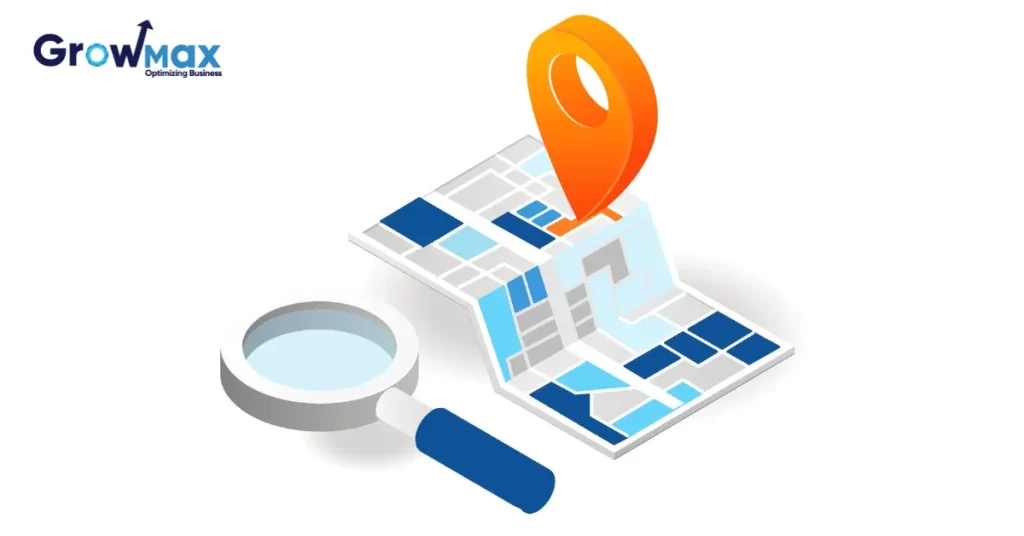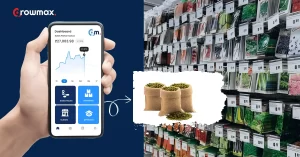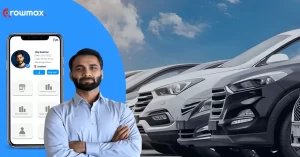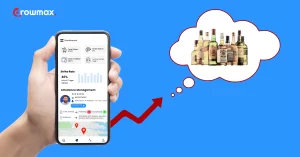Did you know that there are more than 3 million possible routes for a 10-stop journey? If we add just 3 additional stops, the numbers can go up to billions. Some of them are extremely fast, while the majority are annoyingly slow. It is because of this complexity that companies prefer using technology rather than humans to plan delivery routes. They use Route Optimization System (ROS) to pick the best routes and simplify things.
What is Route Optimization (ROS)?
Route Optimization is the process of analyzing and determining the most efficient routes for product deliveries.
Companies need to constantly transport their products to distributors or, in some cases, directly to retailers. They must do so while keeping their transportation costs to a minimum. Meanwhile, they are confronted with multiple locations and countless route options. Choosing the best option among them is not as easy as it looks.
This is where ROS comes into play. It determines the fastest route that covers all the points on the map.
It is not just about finding the shortest path between two points. ROS also includes other factors that have a direct effect on the journey. These factors include traffic, right-turns, road intersections, nearby drivers, and so on.
It does this through complex algorithms that access all of the possibilities and other important factors involved.
The advancement of Artificial intelligence has made it even better. These software can now constantly learn about their surroundings, predict traffic, provide ETAs (estimated time of arrival), and make intelligent decisions.
Why Should You Care?
ROS provides immense value to businesses. There are many reasons to have ROS in your business. Here are some important ones to consider:
1) Fewer Delays
- ROS eliminates the logistics delays to their greatest extent by finding the fastest routes for product deliveries.
- Furthermore, a proper organization of vehicles allows a firm to distribute the work evenly among all the delivery trucks.
- It ensures that a truck travels through a route only once, saving the time that was previously wasted by repeated rounds
2)Reliable ETAs (Estimated Time of Arrival)
When retailers place their orders, they need to know when they will receive them. Brands promise their delivery dates but often fail to keep this promise because of the laggy routes. It degrades customer satisfaction and customer loyalty faster than anything.
ROS helps a firm deliver its products with accurate timings. Furthermore, complex computation and AI help you predict the arrival time with great accuracy. This is the secret behind the perfect-timed deliveries of e-commerce giants like Amazon.
3) Reduced Costs
Minimum cost and maximum profits are the ultimate goals of any business. Among all of them, Logistics is one of the highest costs they have.
ROS helps them cut it down.
It saves resources to their greatest efficiency and reduces unproductive wastage to the minimum.
Some Important costs that ROS saves are:
Fuel costs
Rising fuel prices contribute to the biggest expense in the overall logistics costs for any business. ROS helps businesses minimize fuel requirements by finding shorter routes. This results in lesser fuel requirements and ultimately reduced fuel costs.
Additionally, It allows businesses to achieve higher ROI on fuel by enhancing the ‘per-vehicle productivity’ and the number of deliveries per day.
Vehicle costs
Most firms often ignore the wear & tear (depreciation) cost of vehicles and are often not included in their logistics costs. However, this is an important cost to consider because the vehicles that tear down eventually need to be replaced, which costs money.
ROS helps the vehicles to complete their tasks traveling lesser miles every day. This makes them last longer and cost less.
Time and opportunity costs
The cost of the next best alternative to the task your delivery truck is doing is called its Opportunity Cost.
A huge chunk of its time is usually spent waiting in traffic lines and roaming unnecessarily. The opportunity cost of these wasteful delays is— more deliveries.
They could’ve been delivering more products to more locations instead of roaming around the long and inefficient routes.
Raleted Blogs :
- Sales Force Automation: Everything You Need To Know
- Beat Planning in FMCG: A complete guide for managing the nerves of your Business
4) Customer satisfaction
One of the chief reasons why businesses use ROS is that it enhances Customer Satisfaction. The reduction in delays, reliable ETAs, and other effects of ROS ultimately result in more satisfied customers who are willing to buy again.
Customers get their reliable ETAs and timely deliveries of their desired products. This enhances both your customer satisfaction and Brand Image.
5) Reduction in fleet size
As discussed above, a well-optimized Route Plan doesn’t only help brands reduce their costs but also maximize their ‘Vehicle Productivity.’ With ROS in place, delivery trucks can carry more packages to more locations while using the same level of resources simultaneously.
This increased productivity allows a brand to reduce its truck count without sacrificing its performance.
7) Control
ROS gives the companies more control over the finer nuts and bolts of their operations. It lets them plan effectively with real-world data and have reliable predictions regarding product supplies.
With this, businesses can effectively control manufacturing, transportation, and distribution.
Route Optimization system in FMCG and CPG
Faster product deliveries are important for any business. However, It is crucial for FMCG and CPG brands. Delivering their products to their intended shop shelves as soon as possible is necessary for them.
Due to the shortness of the shelf-life of their products, these brands cannot afford things like missed deliveries, delays, or uneven product distribution.
Coming to CPG products, despite having longer lives than FMCG goods, they are still vulnerable to being undersupplied or unevenly distributed. The flow of CPG products needs to be even, consistent, and, most importantly, fast.
Many small brands still plan their routes manually, which are neither effective nor efficient. Manual Planning has many flaws and frequently fails in providing any real value.
What is wrong with planning manually?
If you are one of those brands that are still planning manually, lots of your resources are getting wasted. The sole person in charge of planning cannot comprehend everything. Additionally, there are multiple routes and uncountable possibilities to be considered.
It is mentally impossible for a human to account for billions of distinct possible ways and address the other important factors that affect trucks like Real-time traffic.
ROS bridges all these gaps and further adds to the functions like Fleet management.
Why is Google Maps not enough?
The Manual Route Planners use Google Maps as their go-to software. However, the app is not fundamentally designed to do that.
To be exact, Route planning is not about finding the shortest route from A to B. It is about finding the most efficient route between 40 or 50 different points on a map.
Google Maps cannot help you with that.
How does Route Optimization System differ from Google maps?
1) Structure
A Route Optimization Software is designed to find all the million possible routes between the given locations; analyze all of them, and finally choose the fastest among them.
On the other hand, Google Maps is made for the general public. It helps people find the shortest way from point A to B and then from B to C. It is not designed for multiple locations and finding routes for all at once.
2) Multiple Trucks
A company uses multiple trucks to deliver its products and has multiple locations to consider. ROS can track and manage these trucks, their routes, and their work. At the same time, It can also distribute the distances evenly among all the delivery agents for further time savings.
Google maps, in contrast, cannot plan an exact route that includes multiple trucks.
3) Feature to Import and Export data
Companies need to extract data from their systems and feed in the data when needed in this digital era. Recording these routes in paper files makes no sense.
route optimization software allows firms to export their data in widely used formats like .csv, .pdf, .xls. Additionally, It lets them Import the previous data into the software for more accurate routes and predictions.
Doing these is not possible on google maps.
4) Calculations
Google Maps does not have any feature to calculate while planning routes. The person who is planning needs to do all the time-consuming calculations himself.
This is not the case with ROS. All the calculation parts are dealt with the software itself and are completely automatic.
What should it mean to brands? Quicker planning and effective results.
5)Daily Plans
Manual planning with Google Maps can be a tiring process. It demands both time and attention from the planner. Although it is possible to do so occasionally, making daily plans is nearly impossible.
ROS enables businesses to create daily route plans based on the most recent data.
Conclusion
A proper route optimization system is essential for any company that manufactures and distributes its products. Furthermore, because of the nature of their products, it is crucial for FMCG and CPG brands.
It provides businesses enormous value and allows them to save their resources. Although some ROS functions can be replicated using Google Maps, the need for a good Route Optimization System cannot be replaced.




